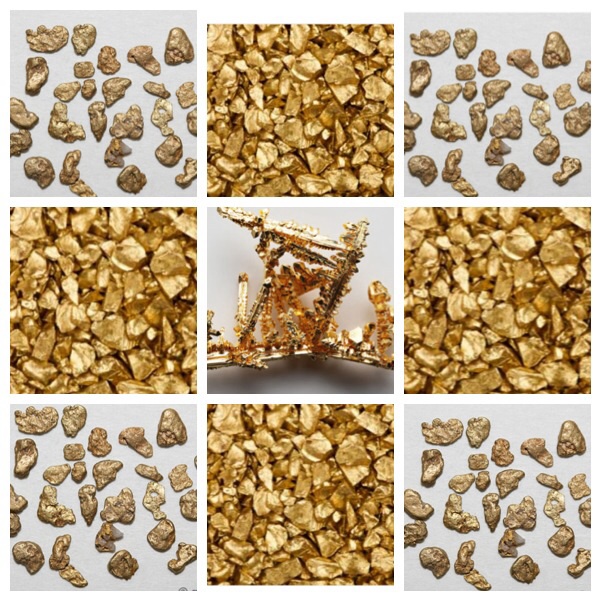Absolutely pure gold is so soft that it can be moulded with your hands.

Image copyright: Grid made with Muzzy.com and photos copyright in the links.
The color of gold is a rich yellow. Not only does it have color, it is also very metallic. Which makes it stand out when you are searching for it in the riverbeds. Sometimes you may mistake gold for pyrite. The difference between them are their streak. Gold\'s streak is shining yellow but pyrite\'s streak is a greenish-blackish.
Gold is not a very hard mineral, it\'s hardness is ranked 2.5-3 on the Moh\'s scale, which means it can be scratched very easily. It has no cleavage so it crumbles easily, and the melting point is 1064.18 degrees. That is very, very hot! The chemical composition of gold is actually gold, Au. The crystalline structure is isometric, which means it has three equal axes at the right angle.
Some uses of gold are for jewelry ( necklaces, earrings, rings, etc.), electronics ( phones, computers, T.V.s, etc.), and awards ( medals, trophies, etc.). It is a very useful mineral that people spend millions of dollars mining, and we are the ones who end up paying for it! Today the cost of gold is 1,350 American dollars per troy ounce. It has gone up because it cost more to find it!
You will find my video in the links.
